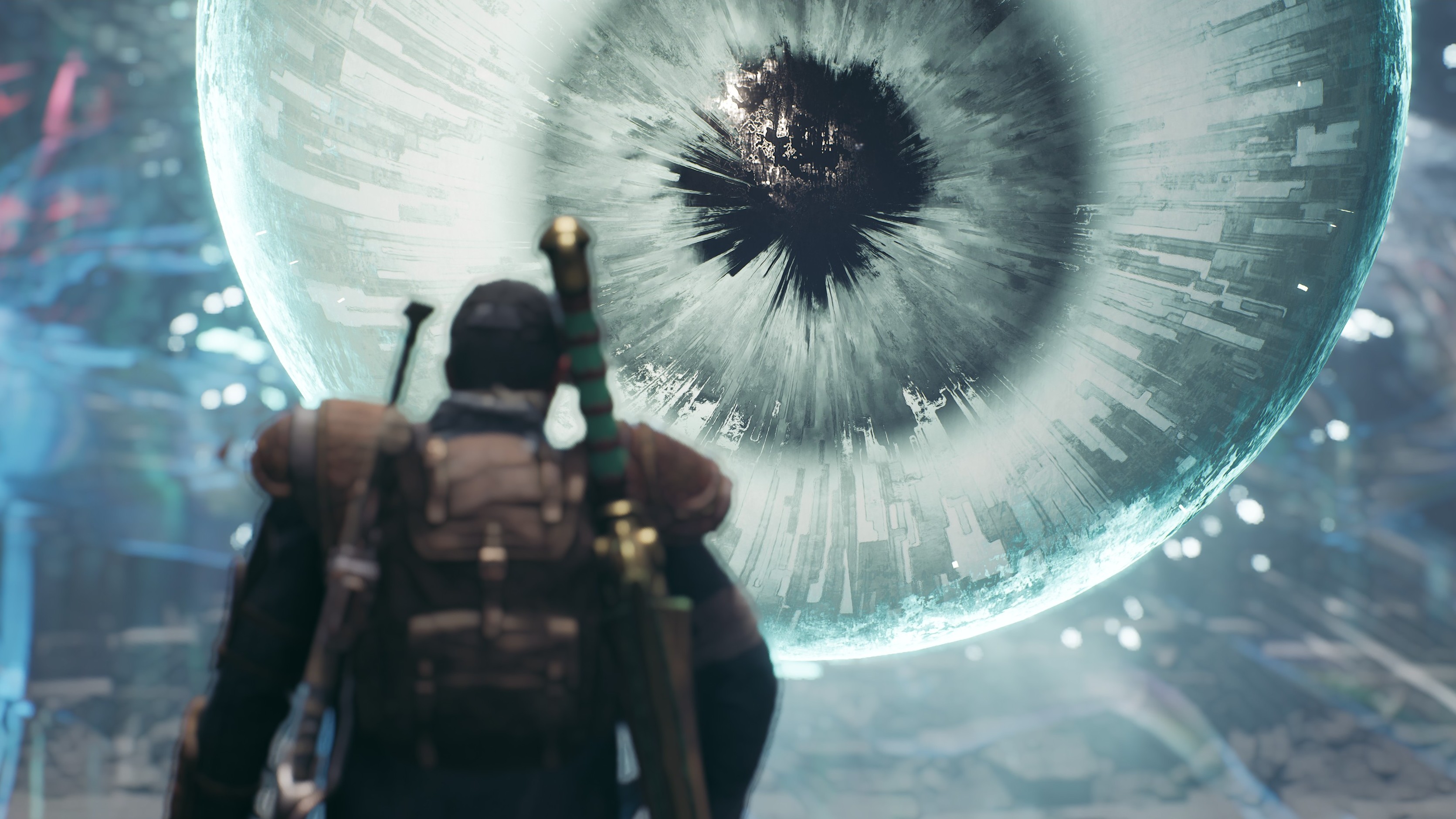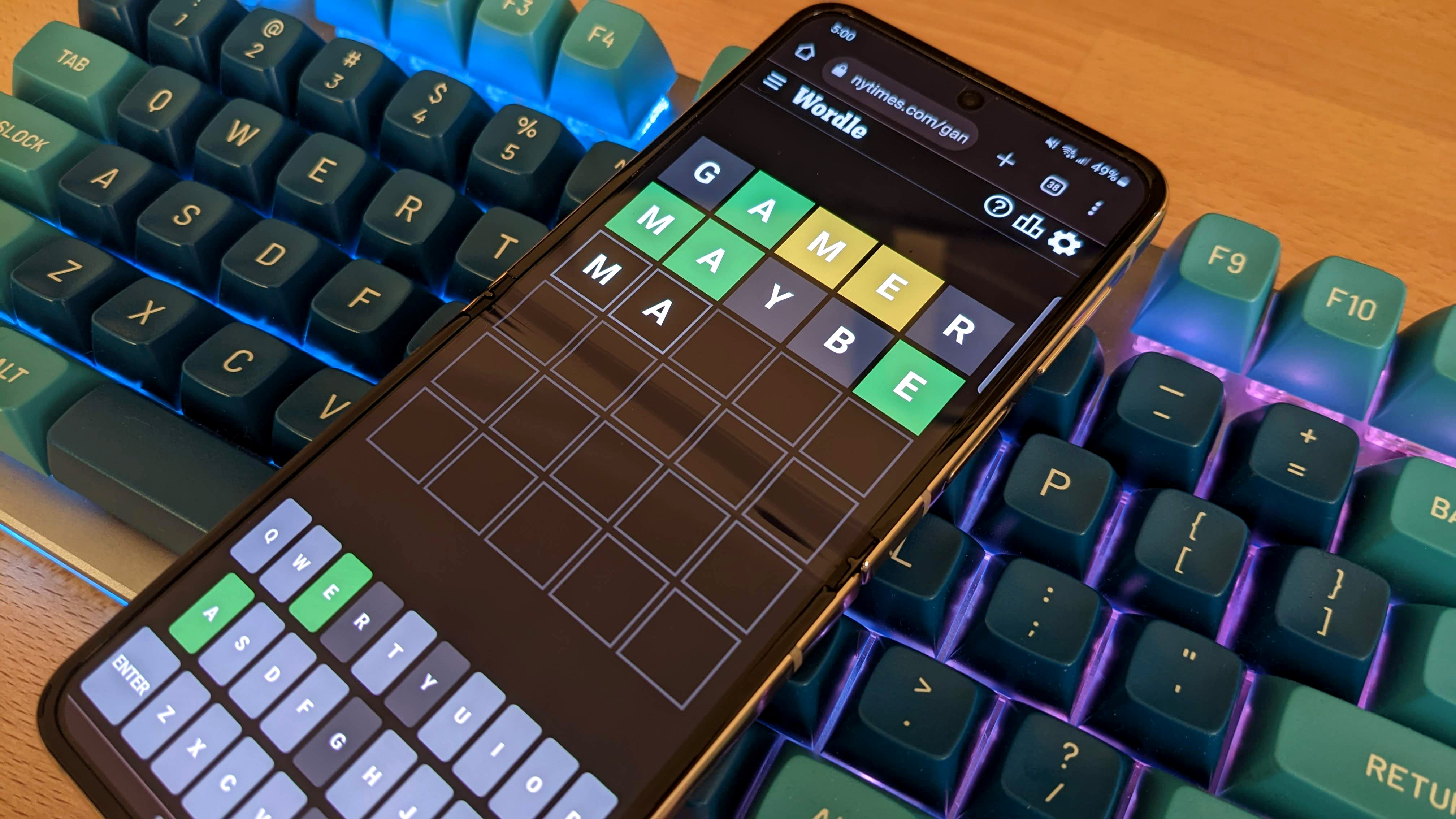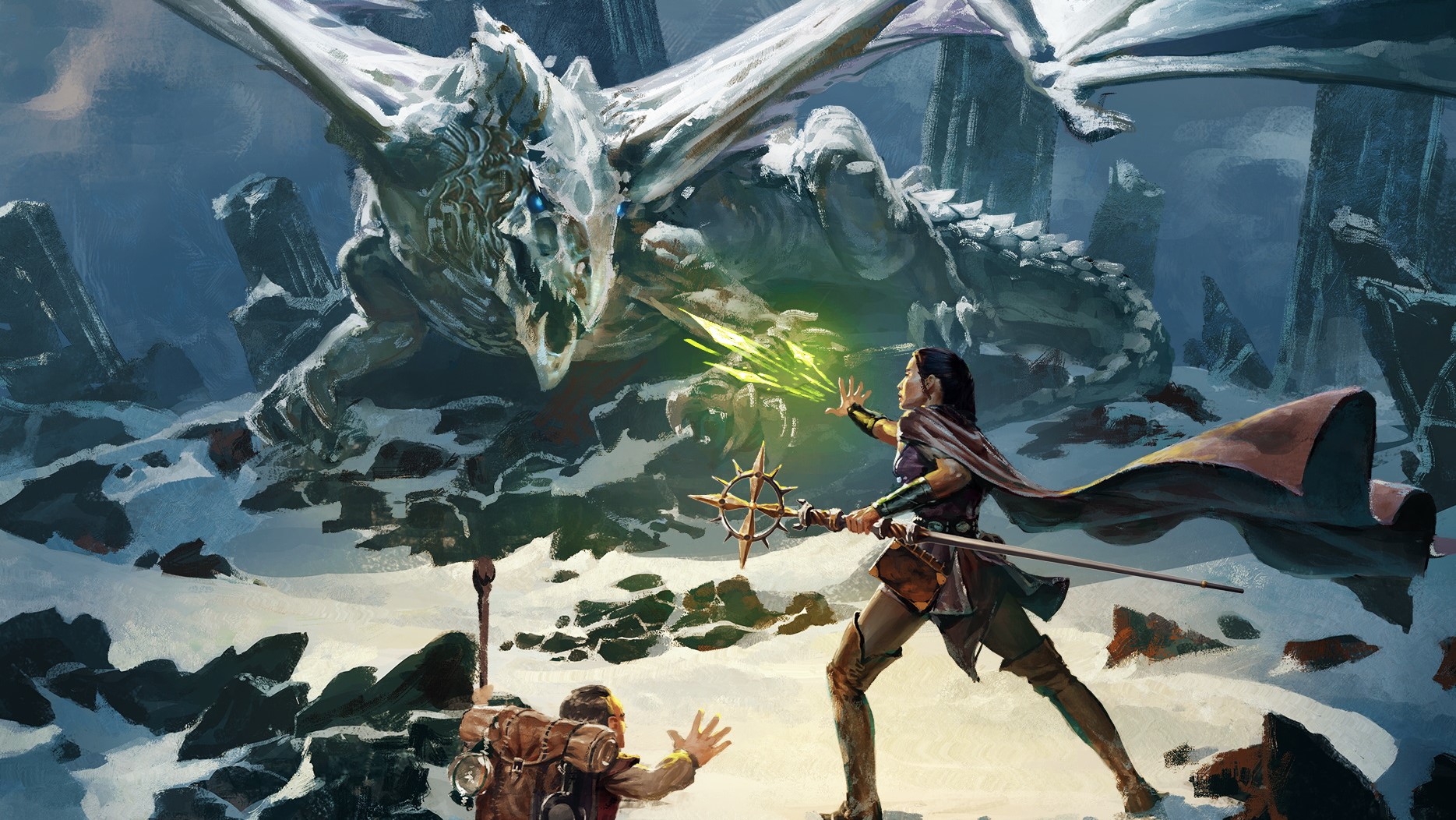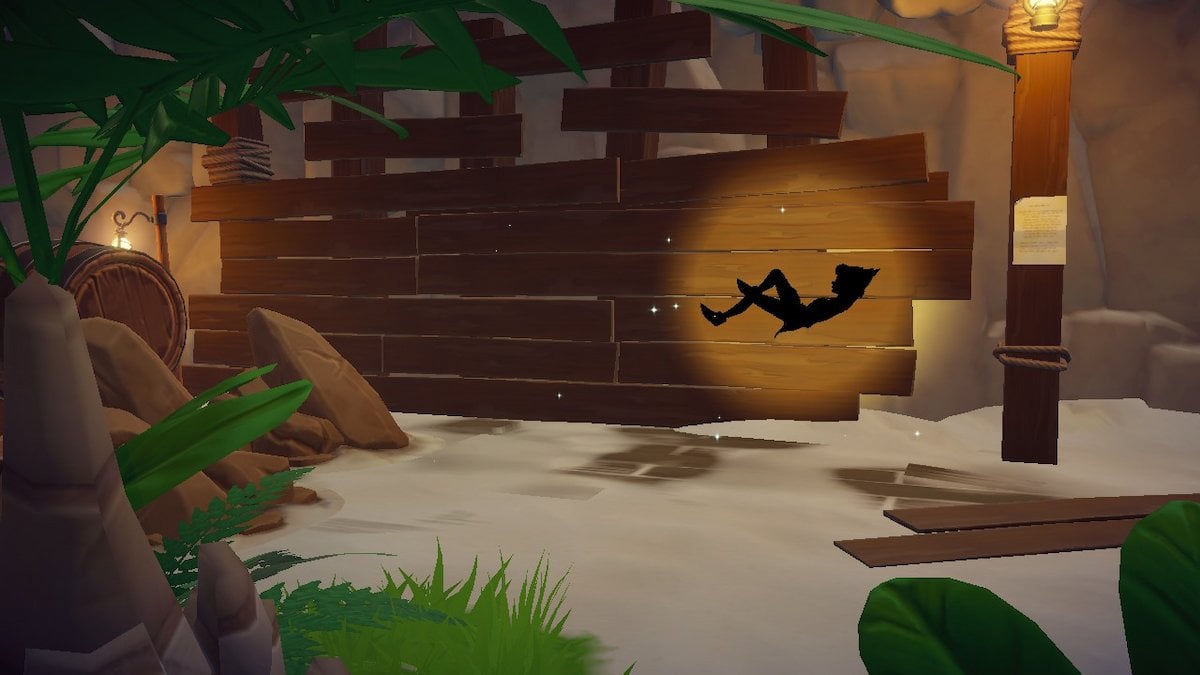
This looter shooter sequel makes subverting expectations a habit.
What is it? A procedurally generated looter shooter with tough combat and a wild imagination.
Release date July 25, 2023
Expect to pay £42 / $50
Developer Gunfire Games
Publisher Gearbox Publishing
Reviewed on AMD Ryzen 5 3600, Nvidia RTX 2080 Super, 32 GB RAM
Steam Deck Verified
Link Official site
I am a space ninja, carving up robot sentinels on an artificial planet stranded in time. A few hours ago, I was blasting cockney elves off a dilapidated clocktower with a gun that fires cubes. Before that, I was having my life drained by a cursed boardgame in an antechamber of a vast golden palace. Oh, and let’s not forget the time I chased my friend through an ancient temple as he was dragged underground by a sentient tree.
If variety is the spice of life, then Remnant 2 is a blazing hot videogame vindaloo. It can barely go half-an-hour without throwing some weird mystery box at your feet, and only half the time do its contents pop out to kill you. As someone who deeply distrusts the skinner-box feedback loops of cooperative looter-shooters, Remnant 2 completely bypasses my cynicism about the genre. It does this by giving me exactly what I want from gaming, namely unique and exciting adventures with my pals that never rely on the numbers going up to keep me planted in my chair.
(Image credit: Gunfire Games)
That might sound straightforward enough, but Remnant 2 is a deceptively complex bit of game design. It takes the over-the-shoulder shooting of Gears of War, welds it to Dark Souls’ twitchy dodge-rolling and checkpointed level progression, then feeds it through a procedural generation algorithm that randomises not just level layouts but the entire structure of the campaign. Everything from the bosses you encounter to the quests you embark on may be completely different from another group’s adventure, and you’ll fittingly only ever see a fragment of what the game offers on a single run.
All this was true with 2019’s Remnant: From the Ashes, and the sequel paints on a bigger canvas with finer brushes. You see lessons have been learned straightaway, in how much quicker Remnant 2 gets to the fun stuff. Like the first game, Remnant 2 starts out with your custom-made character journeying through a post-apocalyptic Earth that, until recently, had been ravaged by a hostile tree-like race of creatures known as the Root. In the first game, it was a dirge of an opening that lasted several tedious hours. In the sequel, you’re on Earth long enough to complete the tutorial, and that’s it. Within forty minutes, you’ve discovered the conclave of survivors that is Ward 13, and travelled through a glowing red crystal to an entirely new realm.
That starting realm could be one of three. I ended up in Yaesha, a fae realm home to a race of satyr-like creatures known as the Pan. But there’s an equal chance you could end up in Ne’rud, the barren planetary construct I mentioned in the opening paragraph. My favourite realm, however, is Losomn, a mirror-world where two reflections of a gilded palace are connected by a sprawling low-fantasy cityscape prowled by townspeople wielding rifles and farm tools. Turning into Bloodborne for a bit is just how Remnant 2 rolls.
Worlds within worlds
(Image credit: Gunfire Games)
The giant blue elf lady who’s been front and centre in all the marketing for Remnant 2? Never saw her. Not once.
All these environments are procedurally generated, and while I spotted a few recurring level tiles on my adventure, Remnant 2’s maps felt unique and hand-crafted most of the time. Yet what impresses most is not how these spaces look, but how rewarding they are to explore. Each world has several “main” areas which typically include two or three side dungeons. But every element is randomly assembled, including the adventures you’ll experience. Venturing into a Losomn sewer, I met a despondent fellow who asked me to look for his wife, which meant searching through piles of bones amassed by vicious werewolf-like creatures. The clocktower I mentioned in the opening was the culmination of another quest, one that involved navigating between two separate areas to solve a puzzle. Some quests have multiple potential resolutions, while others actively seek you out, literally yanking you into a new area like Arkham Knight’s “Man-Bat” side-quest. All, some, or none of this could happen to you on your adventure. The giant blue elf lady who’s been front and centre in all the marketing for Remnant 2? Never saw her. Not once.
There’s a potential counter argument here, which is “Why not let people experience everything in one go?”. Well, speaking personally, I prefer a game that takes 20 hours to complete and leaves me wanting more, than one that takes a hundred hours to complete and leaves me wondering how the hell I’ll find the time to play it again. This approach also makes a run of Remnant 2 feel pacey and purposeful, like a pastime rather than a project. Remnant 2 wants to fit in your life rather than consume it, to give you a complete feeling experience in a reasonable timeframe, while leaving the door open if you want to come back. It’s an attitude I respect.
Naturally, Remnant 2 saves its biggest surprises for its bosses, although I’ll say right now that not every boss is brilliant. A few dungeons I explored ended with me fighting a souped-up version of a regular enemy, while my first run of the game pitted me against not one but two amorphous blobs. On the other side of that coin, however, is a giant alien god that can punch through reality, and a living Root hive that crushes the platforms you fight it from, sending you tumbling into the void unless you leap out of the way in time. The standout encounter is against a “creature” called the Labyrinth Sentinel. I won’t describe this in detail because it was such a fantastic surprise, but it’s a sequence you might see if David Lynch directed an Indiana Jones movie. It’s destined to become a regular feature in Internet “Best Boss Fight” discussions, entirely original and utterly thrilling.
(Image credit: Gunfire Games)
As a list of cool things to see, Remnant 2 is longer than a loo roll. But you can see a lot of weird stuff on Instagram too, and you won’t pay forty quid for the privilege. Fortunately, behind Remnant 2’s surreal sightseeing tour is a thoroughly entertaining shooter. Mechanically, it gets the basics right. Movement is breezy but not weightless, the starting weapons are satisfying to wield, and your dodge-roll is nimble and has a generous invulnerability window. More broadly, the way Remnant 2 filters combat encounters into its procedurally generated levels impresses. Enemies attack from all angles, requiring you to be constantly vigilant about your surroundings. But it isn’t an endless, shapeless onslaught either. It ebbs and flows between tense and intense.
Combat becomes more distinctive when you fold in new weapons and archetypes—Remnant’s word for “classes”. Remnant isn’t a Borderlands-style gun-fest, where incrementally better weapons are scattered like chewing gum on a pavement. Instead, you receive a couple of starting firearms that’ll remain handy for most of the game, but can be modified with special alt-fires. Alongside these, you’ll occasionally pick up completely new weapons that function in vastly different ways. For example, I crafted a weapon called “Twisted Arbalest” that fired a stone discus which bounced rapidly between enemies. This made it fantastic for crowd control, but less effective against tough single opponents, a trade-off I compensated for with a fast-firing secondary weapon. Weirdly though, none of this applies to armour. There are some nifty armour sets to collect in Remnant 2, but they can’t be crafted or modified.
Man’s best co-op partner
(Image credit: Gunfire Games)
An AI dog that not only helps you fight enemies, but can buff you with its howl and, most crucially, revive you if you’re downed.
Archetypes, meanwhile, grow more interesting as you progress. Of the six starting archetypes, I spent most of my time with the Handler, as it’s comfortably the best class for mixed solo and cooperative play. The Handler is accompanied by an AI dog that not only helps you fight enemies, but can buff you with its howl and, most crucially, revive you if you’re downed in combat. Each archetype has a mixture of active abilities and passive perks that level up as you progress through the game, and once you hit level 10, you can equip a second archetype and mix its abilities with your own. So you could combine your Handler with the Hunter archetype, and boost your ranged damage. Alternatively, you could combine your starting Archetype with one of several secret archetypes that are unlocked through exploration, such as the Alchemist, who can drop vials of concoctions for various buffs.
It’s a well thought out system, but it isn’t what you’ll play the game for, simply because so much of the progression is either automated or passive. For example, you can unlock around 30 different “Traits” that can be upgraded to provide passive bonuses, but it’s all tiny gains like “+1% Damage Reduction” or “+10% Mod Power Generation”. Useful over time, but profoundly unsexy. All the fun happens in weapon and weapon mod crafting.
(Image credit: Gunfire Games)
Overall though, combat is both entertaining and rewarding. The same can’t be said for Remnant’s overarching narrative, however. There are tons of interesting stories hidden within Remnant 2’s world, in the form of side-quests, individual world stories, and narrative asides like custom-written fables that you can leaf through in ancient libraries. The main plot, however, is even more incidental than last time, a “find three things to save the universe” affair that is very basic and lacks any interesting twists or characters. It revolves heavily around a young woman called Clementine, who you spend precisely five minutes with before she is abducted by a strange inter-realm entity, and thus you never get the chance to form any relationship with the character. What’s doubly odd is that you start the game accompanied by a completely different female character who is your avatar’s closest friend. But once you arrive at Ward 13, this character is immediately relegated to “NPC merchant”.
I can’t imagine how hard it must be to write a coherent story for a game this wide-ranging, especially given large portions of Remnant 2’s campaign are procedural. But this is also exactly why Remnant 2 needs it. Without a neatly threaded story or a consistent cast of side characters, Remnant 2 can, at times, feel like a bunch of random cool shit Gunfire Games has tossed into a blender.
Still, perhaps that’s the price for a game that refreshes itself with every other step you take. I might not take any unifying life lesson from Remnant 2, but there are a dozen smaller moments that’ll be bouncing around my head for a good while, and that doesn’t include the ones I haven’t seen yet. It’s a self-assembling experiential blind bag, with layers upon layers of colourful, plasticky fun.




